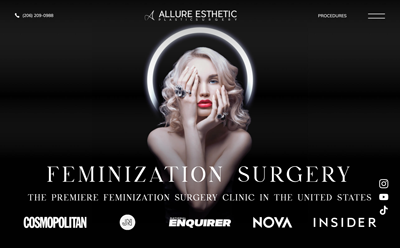What is Paradoxical Adipose Hyperplasia (PAH) Treatment?
Paradoxical adipose hyperplasia (PAH) is a rare complication of cryolipolysis—also known as CoolSculpting. While rare, it can cause devastating consequences that have ruined people’s lives, including model, Linda Evangelista. She underwent CoolSculpting treatment and experienced paradoxical adipose hyperplasia which ruined her career and forced her to flee from the spotlight.
In 2022, Evangelista came forward with her experience and brought attention to the condition. Since then, more studies have been conducted and cosmetic providers aim to determine when and how it occurs most often as well as the best possible treatments for the condition.
What Happens With Paradoxical Adipose Hyperplasia?
Paradoxical adipose hyperplasia is when instead of the fat breaking up and dissolving, fat actually expands and more fat appears in the treatment area. This is why it is referred to as “paradoxical” because it is the opposite of what should and usually does occur. The incidence rate is well under one percent, but the results can be devastating.
While a complication, PAH is not medically dangerous. However, it is permanent and it can leave patients with unevenly distributed fat as well as bunches of random fat throughout the body. Patients sometimes compare these globs of fat as feeling like sticks of butter. Thus, this has been known as the “stick of butter effect.”
The severity of the condition will vary between patients. Some may only have it occur in one treatment area or may only experience a mild amount of fat growth. Regardless, patients do have treatment options to help treat PAH.
Paradoxical Adipose Hyperplasia Treatment With Liposuction
Firstly, the condition usually occurs about three to six months after the CoolSculpting treatment. Then, patients will need to wait an additional nine to twelve months for the “stick of butter effect” to soften. This will make it easier to remove all of the excess fat and make it unlikely to occur again. Treatment too soon can cause reoccurrence.
Secondly, patients who develop paradoxical adipose hyperplasia should not undergo more Coolsculpting treatments. It is not going to treat the condition and is more likely to worsen it. Therefore, liposuction is the best option to treat paradoxical adipose hyperplasia.
Inserting a thin cannula beneath the skin and using gentle suction, Dr. Sajan can target the areas affected by paradoxical adipose hyperplasia to restore normal body proportions. He may be able to help patients achieve the original goal they had before undergoing CoolSculpting.
In some cases, other surgical procedures may be necessary or help too. For example, if extra skin will be left after the liposuction, Dr. Sajan may also recommend a tummy tuck or similar procedure to remove this extra skin for the best possible results.
Choosing Dr. Sajan For Post-CoolSculpting Liposuction
Dr. Sajan customizes each liposuction surgery to fit the patient and their needs. This may include using different forms of liposuction to best break up the fat. He may also treat surrounding areas to create the ideal body proportions and help prevent PAH recurrence. Dr. Javad Sajan is a body sculpting expert who uses liposuction to help patients look and feel their best.
Dr. Sajan does not offer CoolSculpting in his office and has not for several years due to the effects of PAH. He usually advises patients toward other fat removal options such as liposuction and deoxycholic acid which do not have a history of causing a paradoxical fat increase.
Conclusion
Paradoxical adipose hyperplasia is a difficult and distressing complication of CoolSculpting. Luckily, it can often be treated with targeted, expertly performed liposuction in Seattle. Dr. Sajan offers patients liposuction that is customized to meet their needs and desires. Allure Esthetic Plastic Surgery is one of Seattle’s leading plastic surgery practices.
To learn more and schedule a consultation with Dr. Sajan, call 206-209-0988. Patients can also reach out online via chat, contact form, and Price Simulator.
 FeminizationSurgeries.com
FeminizationSurgeries.com
